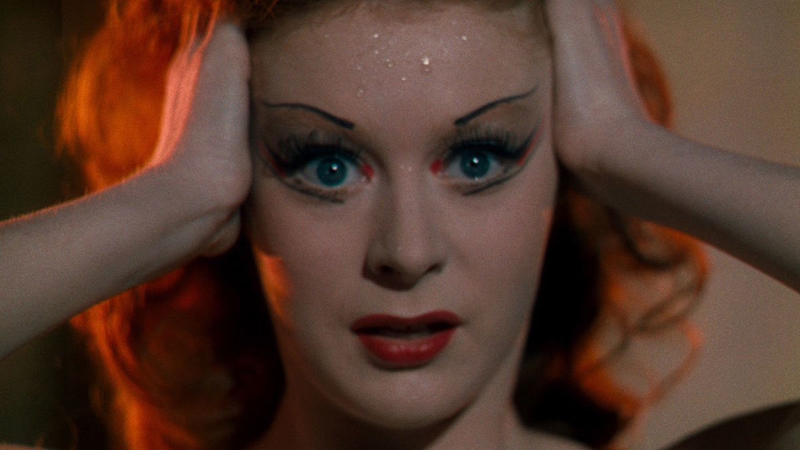Producers-Writers-Directors – The Archers (Michael Powell and Emeric Pressburger) – 1948 – UK – Cert. PG – 135m
*****
A young dancer gives her all to the art of ballet, symbolised by the story’s centrepiece of the Ballet of the Red Shoes, in which the heroine is danced to death by the eponymous footwear – out in UK cinemas on Friday, December 8th; major season Cinema Unbound: The Creative Worlds Of Powell + Pressburger continues at BFI Southbank and on BFI Player until the end of December with a free exhibition The Red Shoes: Beyond The Mirror (booking essential) running until Sunday, January 7th 2024
The second movie by the Archers not to deal with wartime issues in any way, shape or form (the first being Black Narcissus, 1947) deals with art in the story of a young dancer torn between love and her chosen art form. Student Julian Craster (Marius Goring) is outraged to discover, during its debut performance, that his music tutor Professor Palmer (Austin Trevor) has lifted several passages of Craster’s college work to pass them off as part of his latest dance score Heart of Fire. His subsequent interview with ballet company head and creative genius Boris Lermontov (Anton Walbrook, who appeared in four Productions of the Archers and later in The Queen Of Spades, Thorold Dickinson, 1949) secures him a lowly job as music arranger for the prestigious Ballet Lermontov.
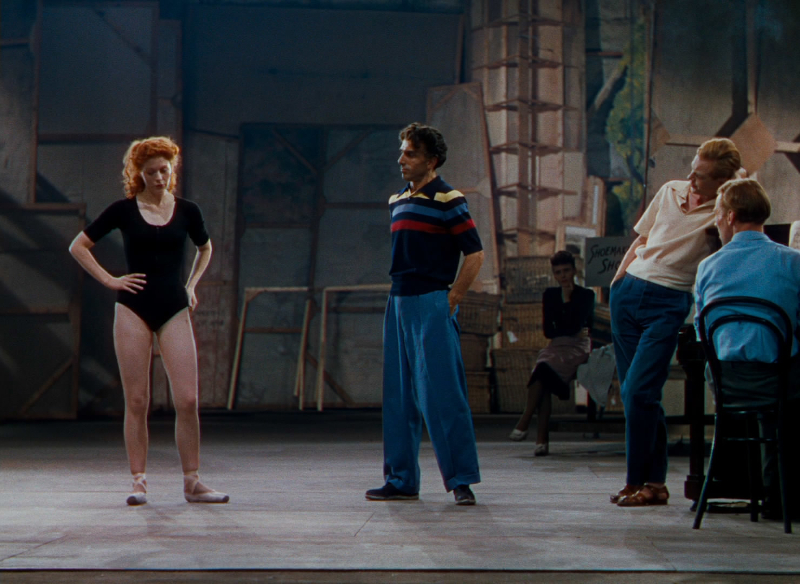
Meanwhile, Lermontov takes umbridge at the attempt by his patron and her friend Lady Neston (Irene Browne) to have Vicky Page (trained ballerina Moira Shearer in her first film role, and the first of two for the Archers, not to mention Peeping Tom, 1960) dance before Lermontov at the aftershow party. He nevertheless takes the girl on as part of the company’s chorus, slipping out one lunchtime to see her play lead in a rival ballet show by Ballet Rambert and having Crastner, whose musical talent he can see, compose The Ballet of the Red Shoes as a starring vehicle for her.
Thrown together by long work hours on the production in Monte Carlo, Vicky falls in love with Julian, which angers Lermontov since he believes that an artist such as a dancer must give her all to her art, abandoning such things as love, which are only for lesser mortals. When it all comes to a head, Lermontov fires Crastner and lets Vicky go. The lovers marry and move to London, where Julian works on his new opera, but Vicky becomes increasingly restless to return to the Ballet Lermontov, which has designated The Ballet of the Red Shoes to be performed by her and her alone. Lermontov schemes to get her back, which would mean abandoning her husband, and it all ends badly.
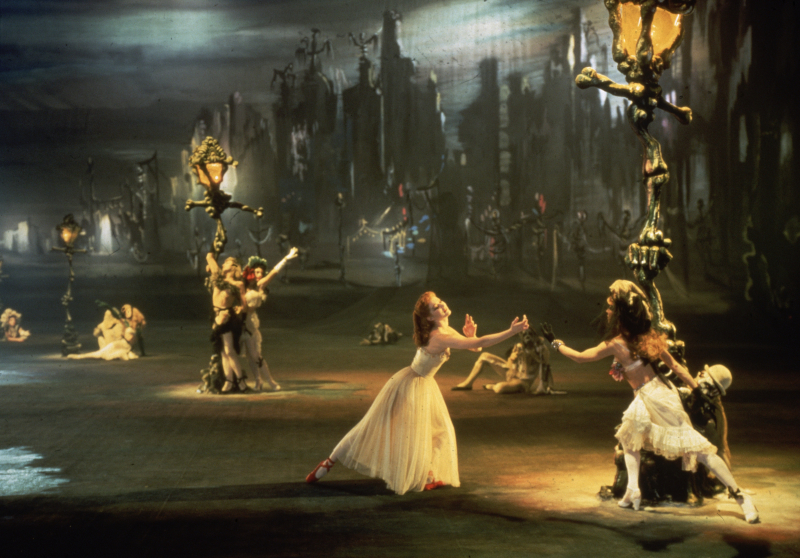
One of the admirable qualities of The Red Shoes is its achievement in portraying a stage ballet company and theatre in which it performs without its portrayal of these theatres ever becoming stagebound, as so often happens when this is attempted in movies. Pressburger’s script input delivers an extraordinary cast of characters, from the five students in the balcony (Crastner, two friends, and two other audience members who are dance rather than music fans) at the opening, to Lermontov’s company in which the leading members are three right-hand men, designer Sergei Ratov (Albert Basserman), choreographer Grischa Ljubov (choreographer and dancer Leonide Massine) and conductor Livy (Esmond Knight), dancers Ivan Boleslawsky (dancer Robert Helpmann) and Irina Boronskaja (dancer Ludmilla Tcherina, later to appear in The Archers’ The Tales of Hoffmann, 1951; Oh…Rosalinda!!, 1955) although there are numerous other extras, including many dancers. Incredibly, while the feel is cinematic rather than theatrical, the film seems to capture the essence of stage ballet.
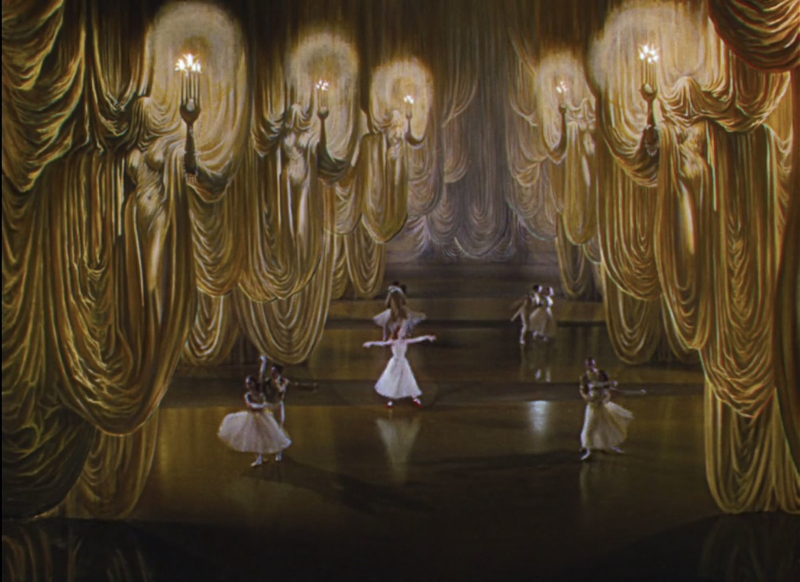
There are clips of Shearer and others performing classic ballets, but the pièce de resistance is the specially composed Ballet of the Red Shoes, based on the Hans Christian Andersen fairy tale, which utilises all manner of then state-of-the-art special and optical effects to achieve an extraordinary fantasy sequence.
The Andersen story tells of a dancer who buys and puts on a pair of red shoes, only to discover that when she wants to take them off and stop, she cannot. The shoes keep her dancing day and night, through town and country, until, in the end, she dies, exhausted – and the shoes are retrieved by the shopkeeper who puts them back in his window to attract the next buyer. It serves as an apt metaphor for the artist driven by her art, and is also the model for the wider screenplay story,
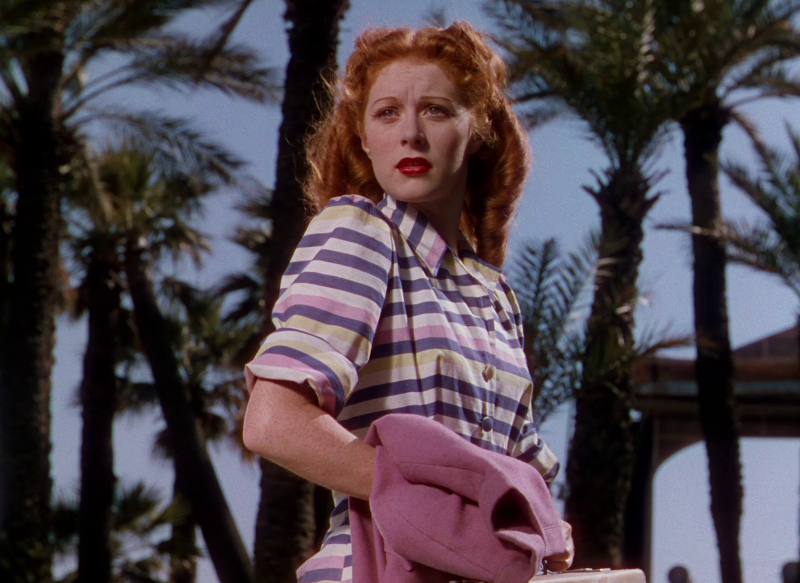
SPOILER ALERT, with the dancer quite literally destroyed by the red shoes at the finale. Like Black Narcissus before it, in which women are transformed from pure nuns into carnal creatures driven by sexual desire, the heroine falls into the grip of an obsession with the art as if transformed into a demon possessed by a death wish. There’s an element of horror, which Powell (without Pressburger) would push to further extremes in Peeping Tom.
SPOILER ALERT ENDS. The Red Shoes also employs melodrama, fantasy and musical elements with great success. The visuals, augmented with an incredible colour palette designed by Hein Heckroth and lensed by Jack Cardiff, are to die for. Which motivation, in terms of the artist and her art, is what the film is ultimately all about. Emotionally, it puts the audience through the ringer and loses none of its ability to do so on subsequent viewings. One of the great masterpieces of British cinema – but then that’s something one can equally say of many of the Archers’ productions.
The Red Shoes is out in cinemas in the UK on Friday, December 8th; a major season Cinema Unbound: The Creative Worlds Of Powell + Pressburger continues until end December at BFI Southbank and on BFI Player with a free exhibition The Red Shoes: Beyond The Mirror (booking essential) running until Sunday, January 7th 2024.
Trailer (British?): terrifying
Trailer (US?): de-emphasises possession aspect
Season Trailer:
